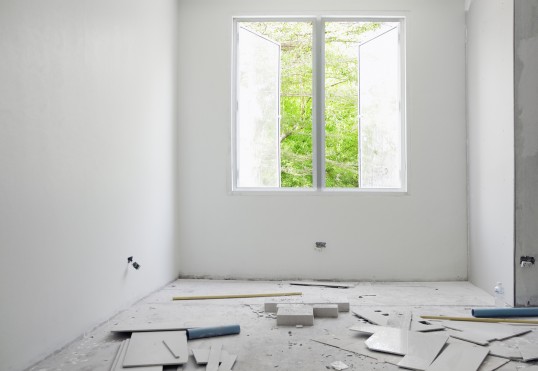- Elektromagnetic Fields
- Indoor workplaces
- Practical Solutions: Ergonomics
- Practical solutions: Hazardous substances
- Practical solutions: Noise
- Practical solutions: Machine safety
- Practical solutions: Personal Protective Equipment
Materials

Building shell
Source: Friedberg, fotolia.com
Materials, furniture, and cleaning and care products can have a major impact on indoor air quality since they are potential sources of gaseous or particulate emissions. The best known examples are formaldehyde, which is mostly emitted by chipboard and wood preservatives.
The information available on the materials and products used is usually sparse, if it exists at all. This tends to make it difficult to determine which harmful substances in the indoor air might have caused employees’ health complaints.
In order to prevent health complaints of occupants, new-build, reconstruction and refurbishment projects should only use construction chemicals that cause minimum indoor air pollution. It is therefore advisable for the materials used to be limited to those bearing the appropriate test mark.
If emissions occur despite this strategy, it can be useful to heat the room and ventilate it to let in plenty of fresh air. In many cases, the emission rate falls to a very low value after a few months. However, some materials, among them chipboard, can continue to emit significant quantities of substances for longer - even up to several years.
For download

Further information

- Building Products- Information desk of the German Umweltbundesamt
- Committee for Health-related Evaluation of Building Products
- The Blue Angel
- EU-Ecolabel
- GEV-Emicode ®
Contact
Hazardous substances: handling, protective measures
Tel: +49 30 13001-3320Fax: +49 30 13001-38001